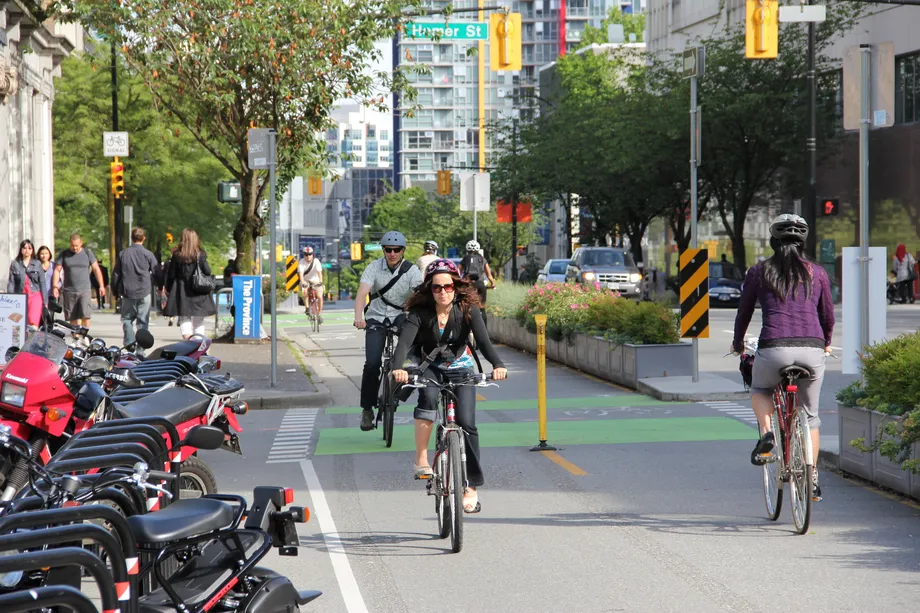In the wake of the pandemic, a noticeable surge in cycling across the United States has prompted speculation about whether this trend will evolve into a long-term shift. With millions of Americans rediscovering the joy of biking, the potential benefits extend beyond personal health and recreation. This blog delves into the reasons behind this cycling resurgence, examining its environmental impact, safety concerns, and the transformative role of urban planning. Join us on a journey through the evolving landscape of American cities and discover how the humble bicycle is pedaling its way to becoming a sustainable mode of transportation.
The Environmental Imperative
As the largest contributor to greenhouse gas emissions in the United States, the transportation sector plays a pivotal role in the battle against climate change. Traditional modes of transportation, particularly cars and light trucks, account for a staggering 58 percent of these emissions. It’s here that the bicycle emerges as a champion of sustainable urban mobility. Unlike the gradual transition to electric cars, the switch from cars to bikes offers a faster and more immediate reduction in emissions.
Cycling not only reduces carbon footprints but also addresses the alarming statistics of motor vehicle accidents. With over 39,000 Americans losing their lives in such accidents annually, including more than 700 cyclists, the need for alternative, safer modes of transportation becomes increasingly evident.
Safety Matters
Despite the burgeoning interest in cycling, safety concerns persist as a significant deterrent. It’s not merely about painting bike lanes on every street but creating comprehensive bike networks—interconnected webs of bike paths ensuring safe travel from point A to point B. According to the League of American Bicyclists (LAB), approximately 70 percent of people in the 50 biggest metro regions in the U.S. express interest in biking, but half of them cite fear as a significant barrier.
Bike networks comprise greenways, protected bike lanes with physical barriers, and quiet streets, collectively fostering an environment where cycling becomes a safe and routine mode of transportation. Ralph Buehler, chair of urban affairs and planning at Virginia Tech, aptly notes, “Cycling has to become boring to become really successful.” In other words, the creation of mundane, predictable routes ensures a secure space for cyclists, deterring potential dangers.
The Rise of Bike Networks
Examining the growth of bike networks in the United States unveils a promising trajectory. Between 1991 and 2021, there was a substantial six-fold increase in paved, off-road trails, expanding from 5,904 miles to an impressive 39,329 miles. Cities like Washington D.C., Minneapolis, Chicago, and Los Angeles have more than doubled their city bike lanes from 2000 to 2017, while New York and Seattle have more than tripled theirs.
Protected bike lanes, a key component of safe cycling infrastructure, have seen a dramatic increase, growing from only 34 miles in 2006 to 425 miles in 2018. With the surge of activity during the pandemic, it’s estimated that this number has surpassed 600 miles. Even New York City alone boasts 200 miles of protected bike lanes, with plans to add an additional 50 miles each year. The nationwide trend indicates that cities are actively investing in the construction of bike-friendly infrastructure.
Urban Evolution
While national statistics may suggest a decline in overall bike ridership, a more nuanced reality emerges when focusing on cities that have invested in their bike networks. Case studies from Santa Cruz to Washington D.C. reveal a transformative power in bike-friendly infrastructure, positively impacting commuting habits.
In Santa Cruz, California, approximately 9 percent of workers bike to work, while in Boulder, Colorado, it’s just over 10 percent. In Davis, California, this figure rises to an impressive 19 percent—an almost European level of bike commuting. Bigger cities have witnessed substantial increases as well. Washington D.C., for instance, experienced a dramatic shift from only 1 percent of commuters biking in the late 1990s to 5 percent by 2018.
The evolving nature of American cities, embracing and investing in bike networks, presents a promising outlook for the future of urban mobility.
Accelerated Change during Lockdowns
The COVID-19 pandemic served as an unexpected catalyst for change, prompting cities to experiment with temporary bike lanes as trial runs. Analysis conducted by experts Buehler and Pucher reveals that, across the board, there has been an increase in cycling during lockdowns. Cities like Boston, New York, Seattle, and Oakland witnessed the installation of temporary lanes, with some changes becoming permanent.
In Boston, a bike lane made of orange traffic cones on Boylston Street, a major thoroughfare, transitioned from a temporary measure to a permanent feature, replacing cones with bollards. The pandemic demonstrated how cities can implement significant changes in a short period. It accelerated the adoption of cycling as a viable mode of transportation and highlighted the potential for quick, positive transformations in urban planning.
Conclusion:
As we navigate the evolving landscape of urban mobility, it’s evident that biking is not just a passing trend but a significant force for positive change. From environmental sustainability to enhanced safety measures, the rise of cycling in the United States signifies a shift towards a more conscious and resilient future. Join the movement, grab your helmet, and pedal towards a greener, healthier tomorrow.

